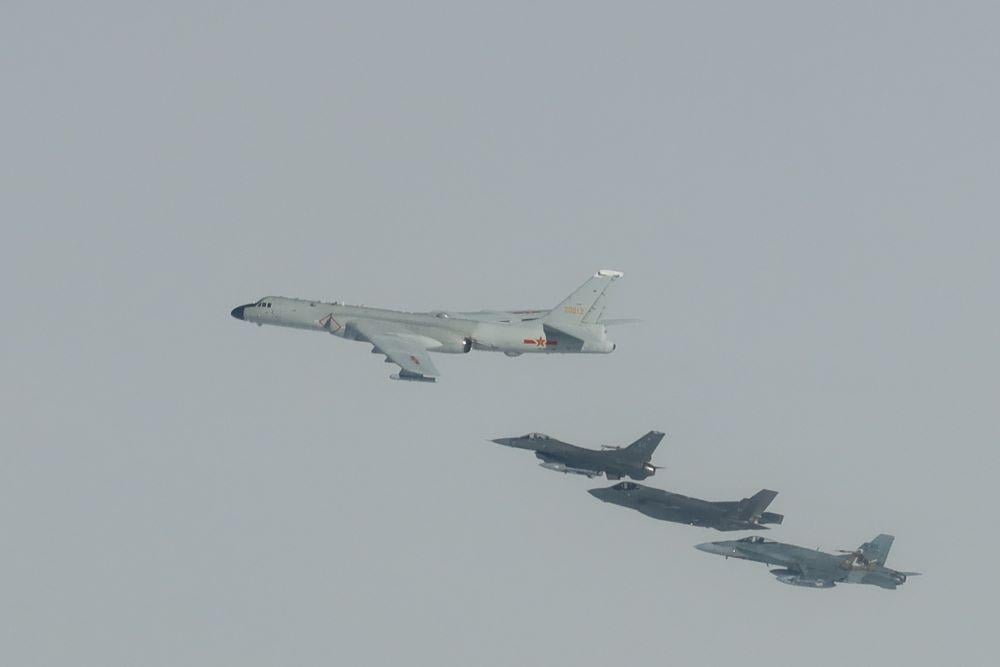
North American Aerospace Defense Command (NORAD) intercepted two Chinese Xian H-6K bombers and two Russian Tu-95MS Bear bombers flying in the Alaska ADIZ on July 24. The bombers were intercepted by U.S. F-16s and F-35s and Canadian CF-18 fighter jets.
HUNTSVILLE, Alabama–U.S. Northern Command is onboarding an artificial intelligence (AI)-driven system that will streamline data sharing between combatant commands and improve domain awareness capabilities amid a shifting threat environment, its commander said Aug. 7.
The command is transitioning to the Mavan Smart System as it looks to share situational awareness, targeting information, logistical data, and other categories of live data between combatant commands, Gen. Gregory Guillot said during his keynote speech at the Space and Missile Defense Symposium here. Guillot is dual-hatted as the commander of the North American Aerospace Defense Command (NORAD) as well as U.S. Northern Command (NORTHCOM).
The U.S. Army in May awarded Palantir a $480 million firm fixed-price contract for the Maven Smart System prototype, with work expected to run through mid-2029. The system is part of the broader Pentagon’s Project Maven AI program, and a contributor to the Defense Department’s overarching vision for a combined joint all-domain command-and-control (CJADC2) architecture.
Once fielded, the Maven prototype will fuse data sources from satellite imagery, geolocation data, and communications intercepts into a common battlefield analysis interface to allow for speedier and more accurate decision-making. The contract will allow the Pentagon to expand the Maven Smart System’s use to operators across U.S. Central Command, U.S. European Command, U.S. Indo-Pacific Command, and U.S. Transportation Command, as well as NORTHCOM.
Guillot expects to complete the transition to Maven this fall. The new system will help to “eliminate the lines on the map that separate combatant commands,” he says. “We need to be able to instantly share data, information, and command and control directives with our formations, as well as with other combat commands, via CJADC2.”
The transition to Maven comes as the command seeks greater employment of CJADC2 capabilities that can more quickly and accurately disseminate sensor-derived data and information for homeland defense.
The threat environment in the Arctic is shifting rapidly, Guillot notes. On July 24, NORAD intercepted a joint People’s Republic of China (PRC) and Russian long-range aviation incursion when two Russian TU-95 and two Chinese Xi’an H-6 military aircraft flew together into the Alaskan air defense identification zone.
The Russian and PRC aircraft remained in international airspace and did not enter U.S. or Canadian sovereign airspace. While NORAD said in a recent statement that the Russian and PRC activity in the Alaska ADIZ was not seen as a threat, “what happened two weeks ago shows another expansion of Chinese presence in the Arctic,” Guillot said.
NORAD also recently responded to a Russian long-range aviation flight from the northeast, as opposed to their more routine approach from the northwest. “The presence of a competitor in a different domain from a different avenue approach–it is noteworthy to us,” he added.
